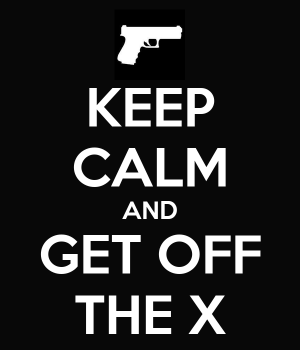
If you stand in one spot during a gunfight, there’s a good chance you’ll die there.
![]()
![]()
Gunfights are hardly ever one-sided. If you’re shooting at someone, chances are that someone is shooting at you, too. It doesn’t matter who started it, bullets are flying in both directions, and you want to avoid getting hit. So how do you do that?
All gunfights start with you and your opponent standing in the locations you found yourself when you drew your guns. Makes sense, right? You found yourself there either because you didn’t have time to move before engaging because things happened so fast, or you didn’t have the luxury of pre-engagement movement to get a better angle for a better shot. Either way, you are now on the proverbial X. Yes, in this case, X does mark the spot. But if you stay there, it’s the spot where you’ll get killed. So move! But how?
Physical Barriers
The last thing you want in a gunfight is to be stuck in the open, completely vulnerable to attack and counterattack.
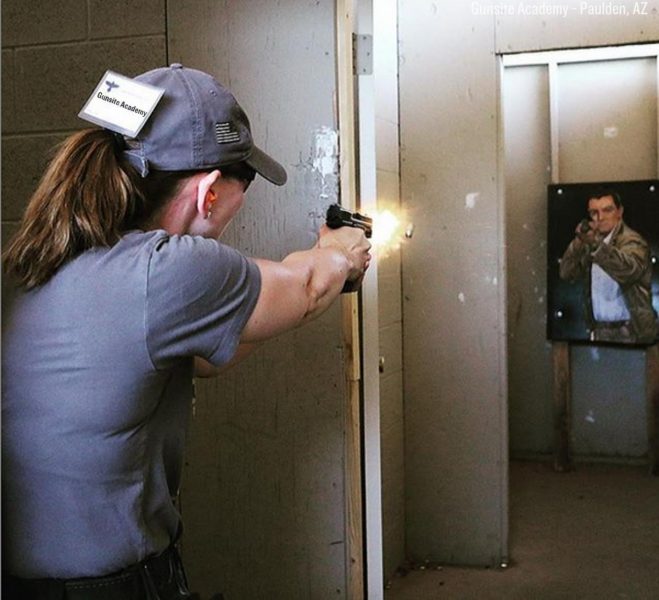
We are probably all familiar with the concept of cover and concealment. As a refresher, “cover” is an object that not only hides your presence but is also strong enough to stop bullets, for example, a concrete wall (assuming they aren’t shooting at you with a Barrett .50-caliber, in which case that concrete wall won’t help you) or certain parts of a vehicle, such as the engine block and axles. “Concealment” only hides you; it does not offer any ballistic protection. Knowing the difference between these two can save your life.
So, whichever you have handy – cover or concealment – you need to use it. But, to do that, you must move. And move fast!
Psychological Barriers
While it’s easy to tell you to move, and on paper (or screen) it seems like a simple concept, it’s quite different convincing yourself to move or even remembering to do it in the heat of battle. Our feet often feel stuck in concrete when the shooting starts. Call it the shock of the moment, tunnel vision, or whatever other labels you wish to affix to it, but the point is we all tend to freeze when faced with a deadly threat. It’s a natural human reaction for self-preservation. We want to maintain control, and one way to do that is to stand our ground and operate right where we are. But this mentality can get us killed.
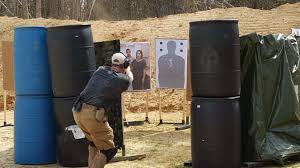
The main reason we freeze is we don’t train enough in “real world” situations. For most of us, the only training we typically get is shooting at paper targets in a sterile range environment where nothing moves and nobody shoots back. We are in complete control of everything: distance, lighting, cadence, etc. Nothing happens until we pull the trigger. In the real world, however, it doesn’t work like that.
How do we prepare to fight that natural tendency to lock up and stay put?
FoF Training
One way is through force-on-force training. (For a more detailed explanation of FoF training, check out this previous post.) In a nutshell, FoF training puts good guys into bad situations, making them problem solve and, if necessary, fight their way out against bad guys who move, run, shout, and shoot just like a real-life encounter. This added level of stress tests participants’ ability to engage beyond the range and work on more skills than just shooting. FoF training serves two primary purposes (and many secondary ones). First, it exposes participants to a more dynamic environment, more like they would find if they ever had to pull their gun out in a real situation. Second, it reveals areas of weakness for participants to work on, one of which is how to learn how to get off the X and seek cover and concealment.
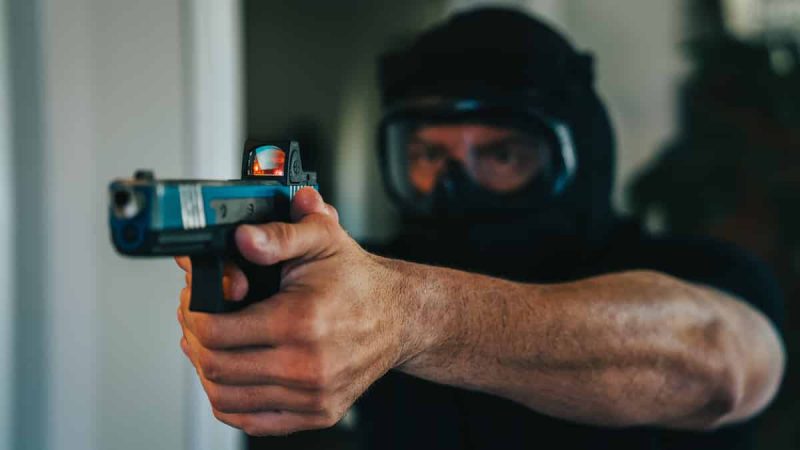
Dynamic Range Time
What if you don’t have FoF training available in your area? In that case, you can simplify your training by setting up barrels and other barricades on a static range – typically outdoors – with a target downrange as your bad guy. Then, practice drawing, moving, and shooting, paying particular attention to how you used the barriers and obstacles for cover and concealment.
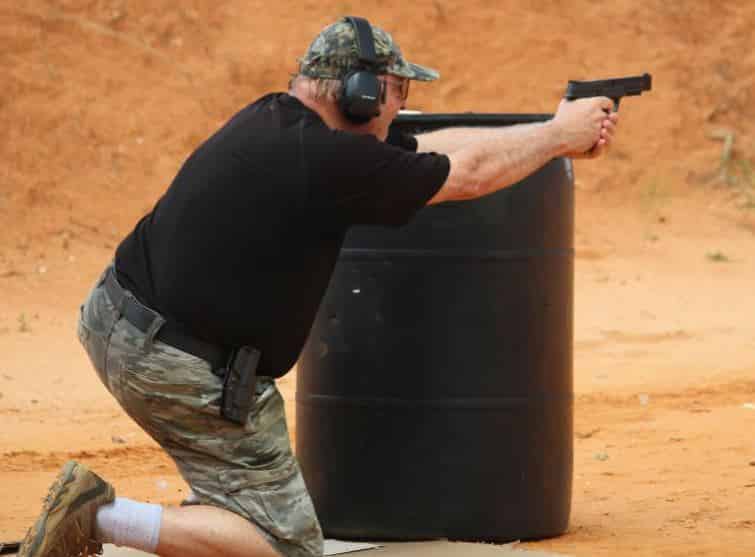
Change the scenarios up each time so you don’t get locked into a pattern. Remember, real shootouts are dynamic and unpredictable. Vary your practice to avoid the rut.
Reloads
Whenever possible, reloading your gun should be done behind cover or concealment. It’s the one time in the gunfight when you can’t fight back. Don’t be left standing in the open when you’re the most vulnerable. You do carry a spare mag, right? Of course you do, because you’re a smart gun owner. Work on not only reloading fast but reloading behind a barrier. This can be practiced at home with dummy rounds. Just make sure there is absolutely no live ammunition anywhere near you.
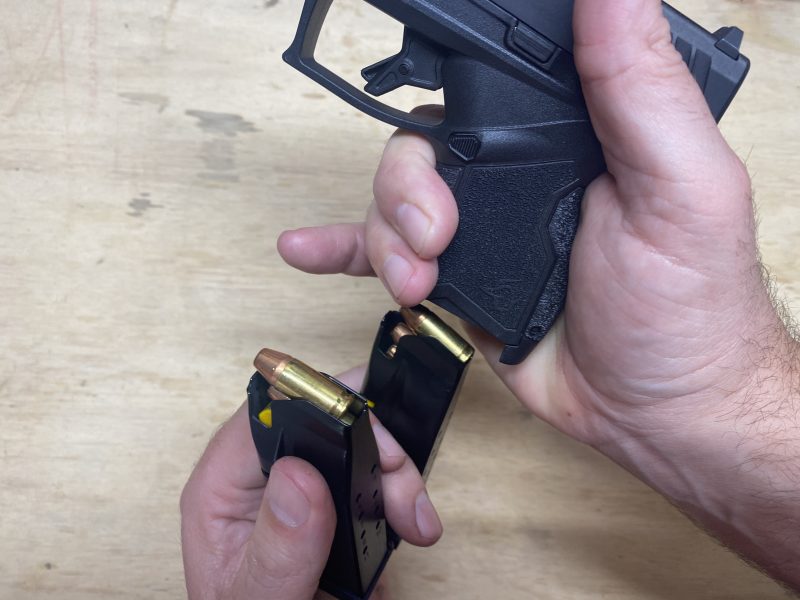
Leave Your X Behind
Just like that failed relationship from long ago, the biggest lesson here is to leave your X in the past. Move on now that it’s over. In a gunfight, move away from your original spot – the X – to get a tactical advantage and seek cover and concealment. Just like mastering any other skill, this requires copious amounts of practice.
ABOUT THE AUTHOR:
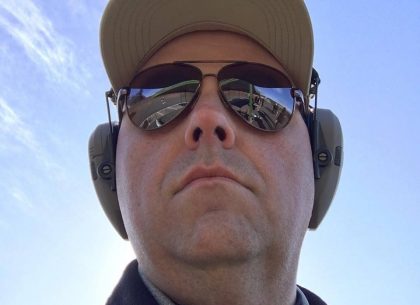
David Workman is an avid gun guy and a contributing writer to several major gun publications. As an NRA-certified instructor, David trains new shooters on basic handgun skills and CCW requirements and is a strong advocate for training as much as possible. “Real-life shootouts don’t happen at a box range.”
![]() You may also enjoy these popular articles:
You may also enjoy these popular articles:
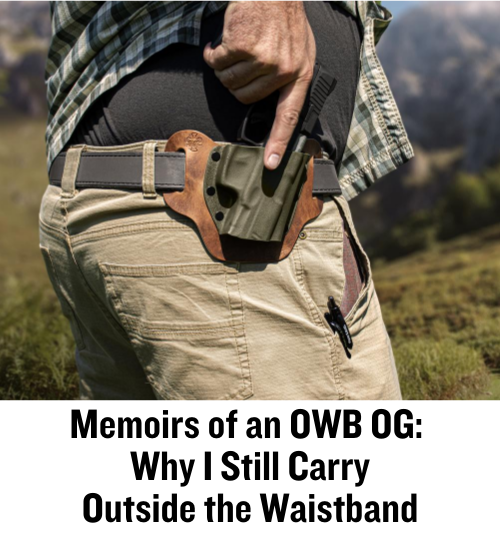
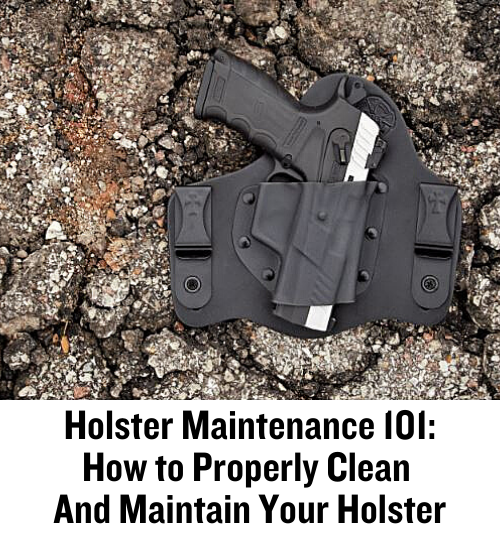
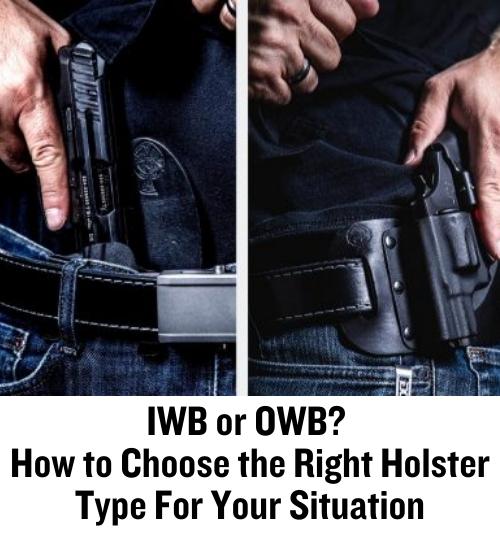

©MTC Holsters, LLC and CrossBreed Holsters Blog, 2021.
Unauthorized use and/or duplication of this material without express and written permission from this site’s author and/or owner is strictly prohibited. Excerpts and links may be used, provided that full and clear credit is given to David Workman and the CrossBreed Blog with appropriate and specific direction to the original content.
![]()

